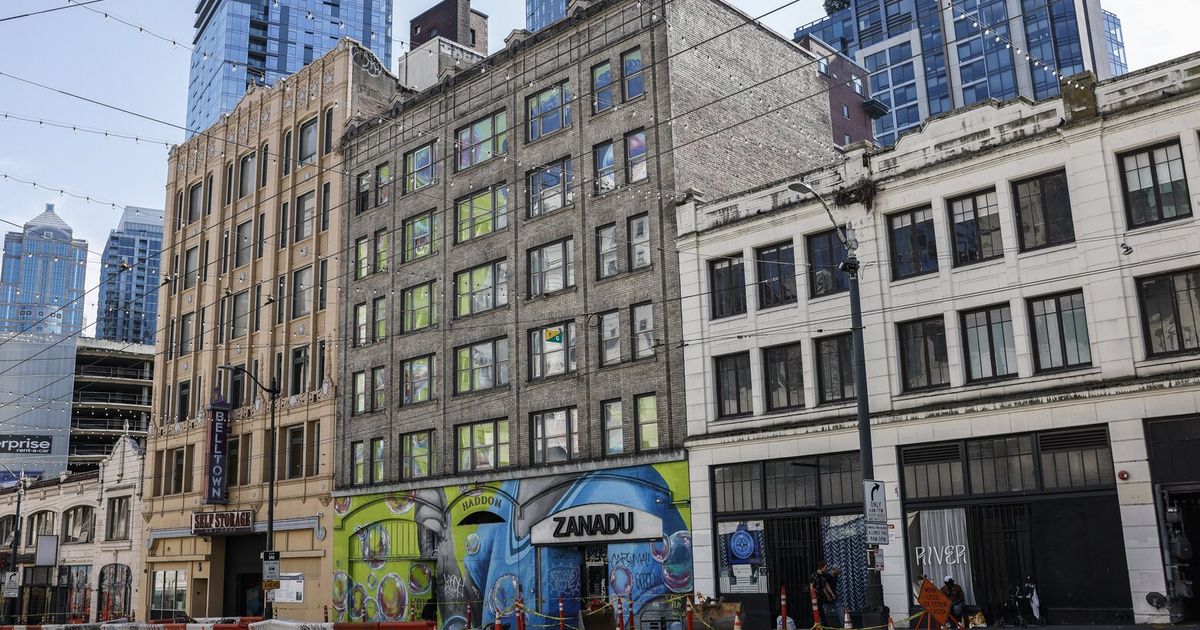In his recent article, BiggerPockets CEO Scott Trench did a great job enumerating all the reasons why multifamily is in the difficult position it’s in. If he had written these same things a year ago, I wouldn’t be writing this rebuttal—I would have simply said, “Ditto.”
But I don’t believe that the picture he has painted is an accurate reflection of where things are headed. Here’s why.
Where We Are
Let me start by acknowledging the obvious: Multifamily real estate has had a difficult past 18 months. Cap rates have expanded. Values have plummeted. Interest rate increases have imperiled a not-trivial percentage of deals.
Rate cap (the insurance multifamily operators use to offset interest rate spikes) prices have caused the same issues they were intended to protect against. And we’re finally seeing which operators have gotten out over their skis, or perhaps who has been swimming naked—whichever metaphor you prefer.
And I won’t stop there: Not only are there challenges in the rearview mirror, but some ahead as well.
Building starts (i.e., new construction) are the highest in decades—we’re expecting over 500,000 new units to be delivered in 2024 alone, which will reduce occupancies and mute rent growth. Inflation is still a factor, with higher labor and materials prices than we’ve ever seen.
In addition, interest rates aren’t likely to plunge this year. And many current owners are still facing interest rate-induced headwinds for their properties.
Pretty scary picture, huh? On the surface, it most certainly is. But the reality is that most of these factors have already been priced into the current multifamily market. In fact, it turns out that the latter half of 2023 was already seeing much of the pain that plagued the industry start to subside.
Let’s dig in and examine some of the data in greater detail, following the same outline Scott proposed in his original article.
Part 1: Cash Flow Isn’t the Only Benefit of Real Estate
The suggestion that “there is only one reason investors buy multifamily” is flawed. Unlike single-family investors, many multifamily limited partners (the folks who are providing a substantial amount of money for these investments) are in financial situations where cash flow isn’t the only reason they are investing in commercial real estate.
Many of these investors are looking for long-term growth. They want to put capital to work in order to generate profits three, five, or even 10 years down the road. Many don’t live on their cash flow but instead understand the benefit of using real estate to build a nest egg they can eventually retire on.
And with multifamily values off 25% to 35% over the past 18 months, there’s good reason to believe that the next five to 10 years could provide an opportunity that we haven’t seen since the Great Recession to “buy low” and generate strong multiyear returns.
In other words, there’s still good reason for investors to look to multifamily as their preferred investment asset class. And that continued belief will serve to prop up demand moving forward.
But what are the specific data points that indicate multifamily is heading toward recovery?
Scott hit the nail on the head when he said that the value of the sector is largely related to the likelihood of these four factors occurring:
- Rents will grow.
- Expenses will fall.
- Interest rates will fall.
- Cap rates will fall.
But while Scott believes each of these is trending in the wrong direction, I disagree. And I believe the data supports my beliefs. Here’s a look at each.
Rents will grow
Yardi Matrix, which is one of the industry’s leading sources of market data, along with nearly every other major industry data provider, projects positive rent growth in 2024. Specifically, Yardi Matrix projects rents to increase by 1.5% this year. I’ll talk more about why this is later.
Expenses will fall
I think we all can agree that expenses aren’t going to fall this year. But that shouldn’t be a surprise; expenses rarely ever fall. Inflation tends to move in one direction, and year-over-year costs nearly always increase.
The real question isn’t whether expenses will drop but whether they will grow more in line with historical averages than with recent trends. And with CPI inflation now nearing 3%, it’s reasonable to assume that expense growth in 2024 will be much more manageable than in the past several years.
Interest rates will fall
Most economists, and even the Federal Reserve, believe that interest rates will fall this year. The market itself is pricing in a reduction of the core interest rate (the federal funds rate) to be between 3.75% and 4%, from the current 5% to 5.25%.
While this reduction in the core interest rate isn’t likely to lead to the same reduction in mortgage rates, using historical averages (mortgage rates tend to hover about 2% above the federal funds rate) indicates that we could see mortgage rates drop below 6% this year.
Cap rates will fall
With over $300 billion in investor capital sitting on the sidelines, according to GlobeSt.com, the combination of these three factors is likely to lead many investors to come off the sidelines, which will increase asset demand and drive cap rates lower.
So, while I agree with Scott that these are the right data points to be assessing, I disagree that they point to doom and gloom. If anything, I believe they are an indication that the market is recovering and moving in the right direction.
One more thing before I move on: There are a lot of passive multifamily investors who invest for tax benefits. Multifamily assets can provide tremendous “paper losses” that can allow operators and limited partners to offset their other passive income. In some cases, these losses can also offset the high W2 income these investors are often generating as doctors, lawyers, athletes, engineers, or other high-paid workers.
As I write this, it appears that Congress is about to pass new legislation that will increase the tax benefits for real estate investors for 2023 and extend those benefits through 2025. This legislation alone should lure a good bit of that sidelined capital back into the markets.
Part 2: The Outlook for Rent Growth is Positive
I’ve provided data that supports the notion that rents in multifamily are likely to increase, albeit modestly, in 2024. But that doesn’t address the why behind the question of rent growth, and Scott has provided justification for his beliefs, so it’s only reasonable that I dig in as well.
As mentioned, there is a good bit of supply expected to come online in 2024—again, Yardi Matrix has forecast over 500,000 units this calendar year. There’s no doubt this will impact the industry, or at least part of the industry. The vast majority of this new inventory will be in the Class A space—the nicest, most expensive tier of multifamily units.
For Class A multifamily, this will be a lot of new units to absorb, and Class A in many areas will likely struggle throughout much of the year as this new inventory comes online. Over the past couple of years, we’ve seen Class A and Class B/C cap rates start to converge, and we’ll likely see that continue in 2024 as Class A is forced to absorb all this new inventory, putting downward pressure on Class A rents and values. Existing Class A owners could see significant softening in markets where there is a lot of supply coming online, specifically in the Sun Belt and Western states.
But most existing inventory in the multifamily sector is not Class A, and most of these newly built units are unlikely to compete with much of the existing housing on the market. Class B/C housing is unlikely to have the same issues with new inventory coming online. There remains a lot of rental housing demand in general, so the small amount of new inventory in these classes should be absorbed relatively easily.
So, where is this excess demand coming from?
The two biggest places are work-from-home employees, who need more space, and the continued unaffordability of single-family housing. According to recent data, renting is currently 52% less expensive than buying a house—the largest gap in history.
It’s unlikely that the current batch of renters is going to transition to homeownership during the current rate cycle, and household formations continue to increase. Those newly minted households will need a place to live, and multifamily housing is their most affordable option.
More notably, housing starts have already peaked (starts were down 50% between the fourth quarter of 2022 and the third quarter of 2023, according to Marcus & Millichap), so there should be significantly less new supply coming online by the end of 2024 and after. So, while there will be some downward pressure on rents from all the new inventory coming online, this pressure is likely to be short-lived, as housing remains millions of units short of demand.
Finally, consider that, with construction financing at a peak and labor prices still inflated, there could be significantly fewer deliveries in 2024 than expected. We’ve seen this in the single-family world the last couple of years—not nearly as much supply coming online as starts might indicate. Either way, 2024 will mark the peak of deliveries until rates come down, so inventory will not be a chronic problem for the industry.
At the end of the day, demand is still likely to outpace supply, and with wage growth once again above CPI inflation (by about 1.8% in 2023), there’s good reason to believe that projections are correct, and rents will increase in 2024.
Part 3: Expenses Growth is Slowing
There’s no arguing that expenses are increasing. And the past several years have seen some of the largest expense growth in history in the following areas:
- Insurance
- Property taxes
- Contractor labor
- Materials
- Property management payroll
- Utilities
In short, real estate has been absolutely pummeled on the expense side of the ledger.
But this applies nearly equally across all residential real estate. Single-family homeowners and investors are also struggling with increased expenses.
Why does that matter? Because there is a relationship between homeownership costs and rent costs. When one increases, the other generally does as well.
Multifamily owners pass these costs on to their tenants, and tenants have two choices—they can move out and become homeowners, or they can absorb these additional costs. Given the cost of homeownership today—and the fact that the cost of owning a house is increasing about the same as renting—the reality is that it’s unlikely that tenants are going to refuse to accept additional rent hikes and purchase their own homes.
Of course, there is one other option: Renters can move in with family or friends to reduce their costs. And we’ve seen this over the past decade, with nearly half of young adults between 18 and 30 living with their parents.
But over the past decade, we’ve also seen occupancy rates at record highs due to undersupply of housing, and even with more people cohabitating with family/friends, it’s likely that occupancies will remain at or above the historical average, and these additional expenses will be absorbed. (Unfortunately, it will likely be at the detriment of other parts of the economy, as renters will be paying a higher portion of the income to housing.)
Part 4: Interest Rates Will Come Down, and There Won’t Be a Major Recession
As mentioned, interest rates are on track to come down starting this year. With CPI inflation nearing 3%, it appears the Fed has increased rates above the neutral rate, and we are now in restrictive territory. The Fed has all but admitted this and signaled that we are at the end of the rate-hike cycle.
While we likely won’t see any drastic moves in rates in 2024, there seems to be agreement across the industry that the next move for rates is down. As Scott pointed out, this will likely flatten the yield curve, the 10-year Treasury yield could increase a bit, and this might put upward pressure on what I believe will be falling mortgage rates.
In other words, I believe the yield curve normalization will cause mortgage rates to fall much more slowly than they otherwise would, but I do think mortgage rates will decrease a bit as the Fed starts to loosen its monetary policy.
As for how much of a decrease I think we’ll see? Again, history does a good job of pointing us to where mortgage rates will likely land, and if history is the predictor, that’s about 2% above the federal funds rate. Assuming the market is correct in the 3.75% to 4% federal funds rate, that puts mortgage rates at just under 6% by the end of the year.
As for recession chances, we are now nine months from an election, and historically, we’ve seen the Fed keep the course throughout an election cycle. Given the strong economic data we’re currently seeing—GDP, jobs data, and asset values are all continuing to see strong headline numbers—and the Fed signaling that it is prepared to reduce rates and maintain its balance sheet, I think it’s unlikely that the economy sees any sudden derailment before November.
Before I conclude, let me add a quick Part 5, as there is one other very important data point that hasn’t yet been discussed.
Part 5: Lenders Are Hesitant to Take Back Properties
After the 2008 crash, lenders learned an important and difficult lesson: They don’t want to own real estate. When a lender takes back a property—especially a large commercial property—that property will typically lose (even more) value between the foreclosure and the eventual sale. Lenders aren’t in the business of asset and property management, and they aren’t very good at it.
Since 2022, lenders have proven willing to work with operators in situations where financial difficulties are directly related to higher interest rates, loan termination timelines, and rate cap costs. Many deals that likely would have been foreclosed on after 2008 are still in the hands of operators, with the explicit agreement from the lender that as long as any financial issues are related to market conditions (as opposed to operator negligence), the lender will be open to working it out.
Additionally, back in June 2023, government bank regulators asked lenders to start working with credit-worthy borrowers who were facing financial stress with their commercial assets.
So it appears that the government and lenders are working in lockstep to limit the number of foreclosures we see during the current CRE downturn.
Final Thoughts
2024 is unlikely to be a banner year for multifamily operators who purchased property between 2020 and 2022. But it’s also unlikely to be the meltdown many are predicting. And for many of those investors who survived the past 18 months and came out the other side relatively unscathed, 2024 is—in my opinion—an opportunity to start shoring up portfolios and perhaps even find some forward-looking opportunities.
Obviously, none of us have a crystal ball—Scott and me included—but those are my thoughts based on the data and on historical precedent.
Ready to succeed in real estate investing? Create a free BiggerPockets account to learn about investment strategies; ask questions and get answers from our community of +2 million members; connect with investor-friendly agents; and so much more.
Note By BiggerPockets: These are opinions written by the author and do not necessarily represent the opinions of BiggerPockets.

















